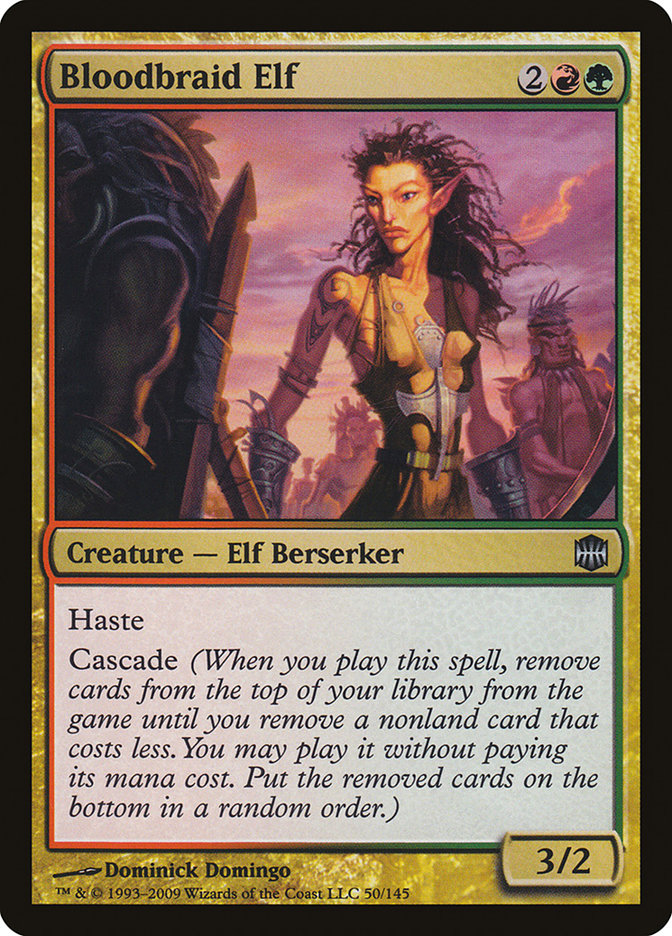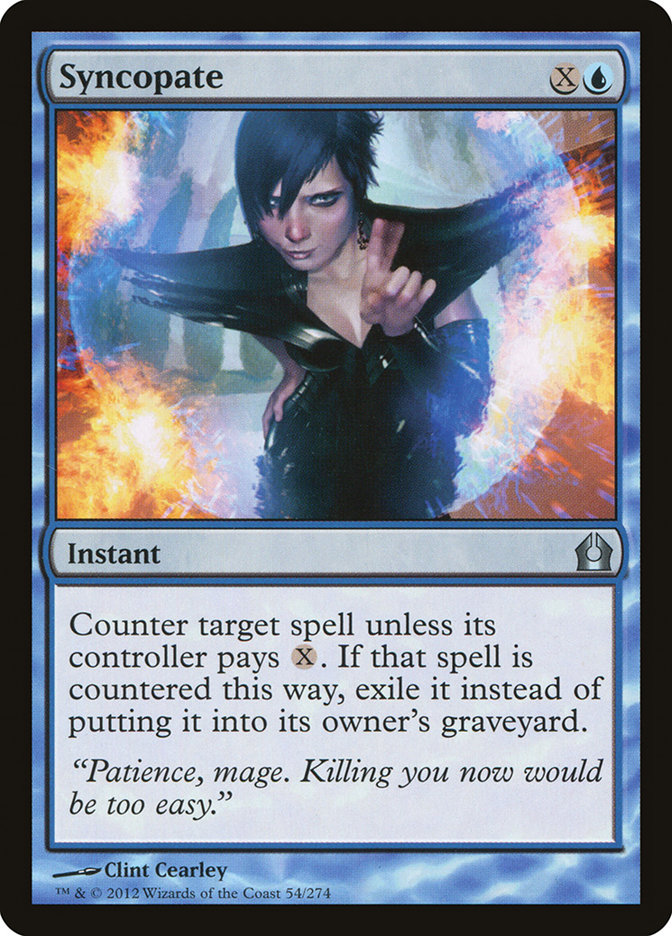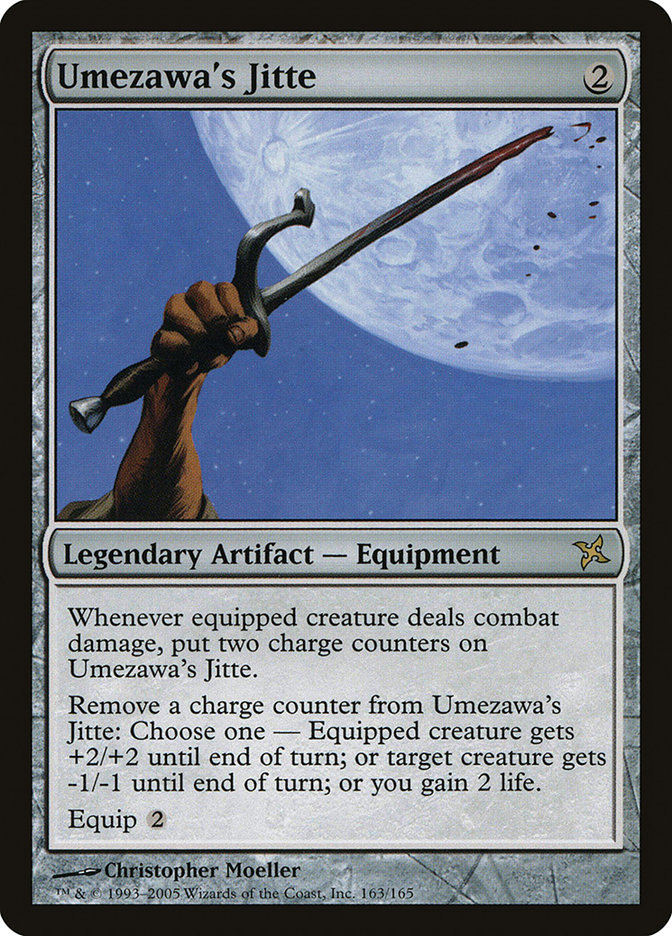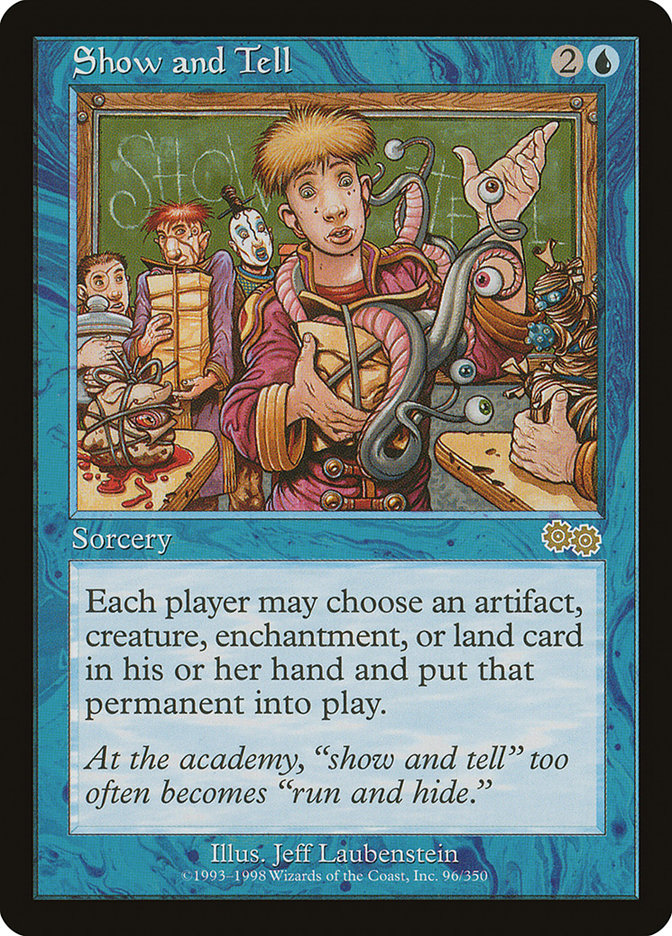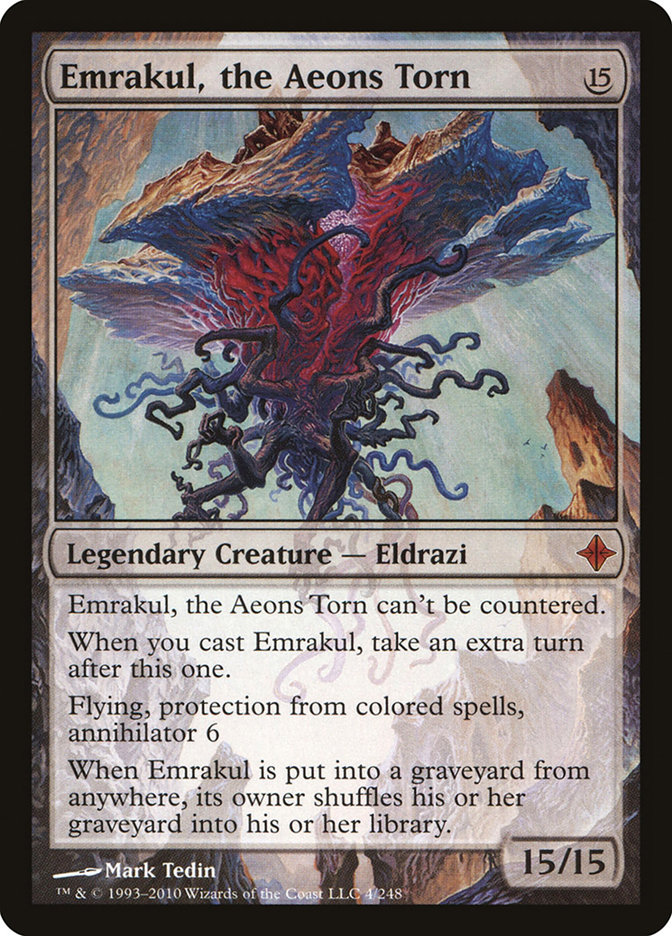Invitational time is one of the most exciting times for me in Magic. This weekend, we’re going to Somerset, New Jersey to play sixteen rounds of Swiss followed by the Top 8 on Sunday. The weekend-long event promises to be a good one, full of plenty of other attractions including a Standard and Legacy Open. It seems like forever since Gerry Thompson won the last Invitational with Shardless BUG in Legacy and U/W/R Flash in Standard, and I’ve been itching to play in another. The weekend can’t come fast enough!
We’ve been doing some testing and I think we have some solid decks for both formats, but we’re not quite ready to throw in the towel just yet. There are a lot of things about the new Standard format that you need to know, as well as some small changes to Legacy and how it will operate under the new legend rule.
This new beast of a Standard looks remarkably like the old version, but we had a bit of a shake-up with AJ Sacher winning the Standard Open in Richmond W/B Humans this past weekend. Take a look!
Public Enemy #1?
Creatures (21)
- 1 Bloodthrone Vampire
- 4 Champion of the Parish
- 4 Doomed Traveler
- 4 Blood Artist
- 4 Cartel Aristocrat
- 4 Xathrid Necromancer
Planeswalkers (3)
Lands (23)
Spells (13)

I’ll let him explain the ins and outs of the deck in a future article; I’ll just point out a few things you should be looking to exploit both with and against this deck.
For one, Curse of Death’s Hold is a huge problem for this deck. Intangible Virtue is a decent answer, but a single Abrupt Decay can bring down the entire house of cards. A lot of your creatures also don’t get the boost from Intangible Virtue, so it doesn’t quite eliminate the problem entirely. Since most decks that want to play Curse of Death’s Hold don’t have a lot of other enchantments to target, it seems unlikely that your Curse will ever die to a Disenchant type spell. They’re going to try and beat Curse proactively as opposed to having some way to deal with it while it is in play. Expect Duress and Appetite for Brains.
Secondly, a lot of the stronger creatures in the deck fold to Pillar of Flame. With so many Voice of Resurgences running around, I expected there to be many more Pillar of Flames at the Open, but I was disappointed. I’m sure AJ was happy about it since one of the main ways he gains a significant advantage is through Xathrid Necromancer. If you can shut down that engine, the deck doesn’t have a lot else going on. Pillar of Flame in the early turns can also shut down Champion of the Parish, which is the backbone of their aggressive starts and one of the easiest ways for the deck to get free wins.
Rest in Peace also does a number on many of the synergies in the deck. So many of its cards rely on hitting the graveyard that a single Rest in Peace can effectively neuter about half of its spells or blank them entirely. The same argument for Curse of Death’s Hold applies here too, as it seems very unlikely they’ll have an answer for it.
While Rest in Peace and Curse of Death’s Hold are great ways to attack this archetype, they will have alternate plans of attack. Don’t expect them to be dead on the spot to either of these cards, but know that you’ll probably need them to fight through the wall of incremental advantage this deck gains through synergy between its cards. Much like Junk Aristocrats, this deck is very tough to play against, and it’s unlikely you’ll be able to make a significant mistake and still win.
I don’t think this is necessarily the best deck in Standard, but it does showcase one of the new interesting cards added to the format. Rotlung Reanimator was a great creature in the Standard days of old, but alongside Cartel Aristocrat and a slew of “value Humans,” Xathrid Necromancer looks to be one of the better rares out of M14.
Beating the “Good Stuff” Deck
I have always disliked Jund and specifically what it stood for in the Standard format. In the past, there were “The Rock” style decks that used a combination of solid removal and great creatures but were never really classified as control. While they are mostly black and green, the original iteration of Jund cropped up with the release of this card, which is now banned in Modern:
The older versions of Jund were a hybrid of aggro and control, using Putrid Leech and Sprouting Thrinax to do much of the dirty work with Bloodbraid Elf coming in on cleanup duty to finish the job. These decks didn’t really do a whole lot other than kill creatures and attack. They weren’t that flashy, and they won quite often. I didn’t like it then, and I don’t like it now.
Maybe that is a flaw in my design as a Magic player, but I prefer decks that have synergy. I want all my cards to work together in some fascinating way, interweaving abilities and spells that generate marginal advantages over time. But just because those are my favorite decks to play doesn’t mean I don’t appreciate what Jund has become.
Since the era of mythic rares began just a few years ago, we’ve gotten a bit more aggressive on the casting costs of some cards. We’ve also pushed the envelope when it comes to absurd abilities and overwhelmingly powerful game enders. You can see it every single time a Thundermaw Hellkite comes down swinging, killing a handful of Spirit tokens in the process. Can you even make this comparison?
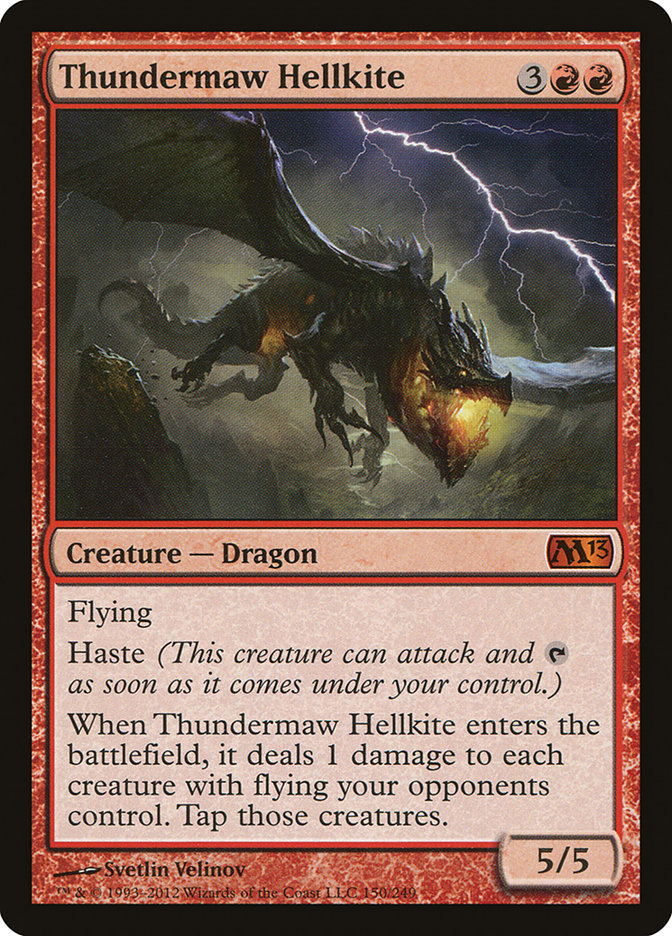 |
vs. |
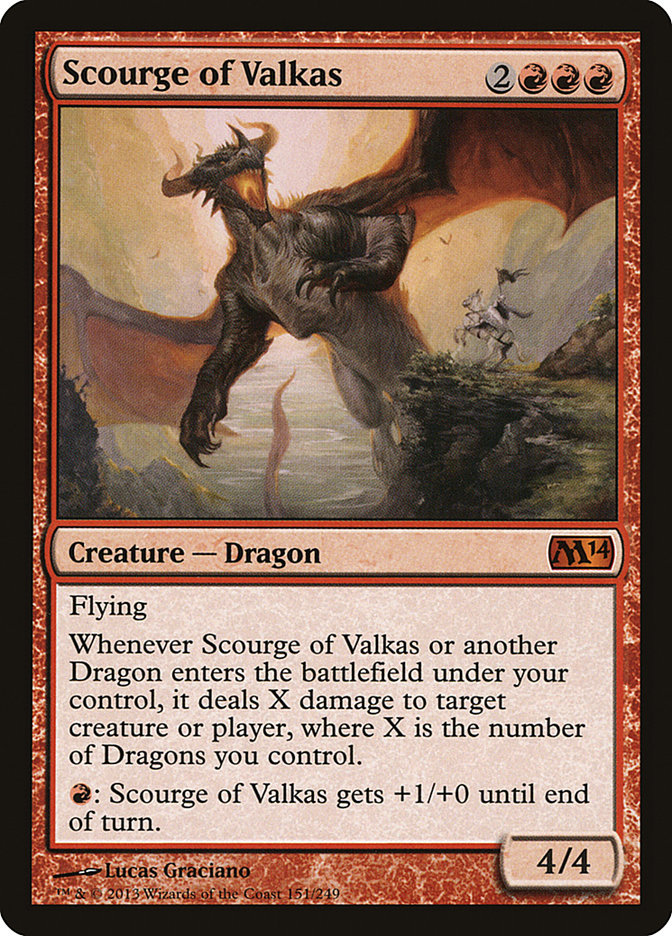 |
Maybe they’ve learned their lesson? M14 seems like a set designed to generate a less powerful Standard format once we hit Theros in the fall. We’re losing a few annoyances like Thragtusk and Thundermaw Hellkite and gaining more creatures like Scavenging Ooze and Lifebane Zombie. I want to see rares and mythic rares that promote interactive games as opposed to ones that assert their dominance immediately upon entering the battlefield. I respect the push in this direction, and I’m already looking forward to it.
Until then, we’re stuck with Bonfire of the Damned and Olivia Voldaren. These two cards singlehandedly invalidate many strategies, and both of them are featured heavily in current Jund decks. Reid Duke writes about the archetype a lot, so if you want to know exactly how to metagame with it over the coming weeks, be sure to check out his articles. As for me, I’m going to tell you how to beat it.
If you notice, there aren’t a whole lot of Cavern of Souls in Standard at the moment. Huey Jensen rode a slew of counterspells in his U/W/R Flash deck to an 8-0-1 finish in the Swiss of the Open in Richmond. I watched him play a fair number of games over the course of the day, and his counterspells did some serious damage to his opponents.
When Jund players are tapping out virtually every turn to do something big and bad, a cheap counterspell could be their undoing. With so many restrictive casting costs in their deck, Cavern of Souls can definitely be a liability, so I don’t think you have to worry about it all that much. The same goes for most of the decks in Standard since everyone is trying to play a ton of different colors and/or creature types in their decks.
Even AJ Sacher W/B Humans deck, which featured approximately a billion different Humans, didn’t play Cavern of Souls because it needed its colored sources of mana to cast spells like Tragic Slip and Sorin, Lord of Innistrad.
What this means is that counterspells are likely very good right now. This is something I exploited a bit after the release of Return to Ravnica. No one was giving counterspells the respect they deserved, and I ended up making the Top 8 of the Open in Indianapolis with a Geist of Saint Traft deck. My record against Jund in the tournament was a whopping 5-1, ultimately falling to it in the quarterfinals due to some unfortunate mana issues.
If I wanted to beat Jund and only Jund, I would play this deck:
Creatures (13)
Planeswalkers (1)
Lands (25)
Spells (21)

What this deck showcases is the power of two-mana counterspells. Being able to Syncopate a Farseek from Jund and follow it up with a Geist of Saint Traft is a huge problem for them. Their only real out at that point is a Liliana of the Veil or a Bonfire miracle. The rest of the deck is set up to clear a path for Geist of Saint Traft to attack through unhindered. In fact, being able to Syncopate anything on turn 2 and follow it up with a Geist is usually backbreaking. Syncopate and Geist of Saint Traft pair insanely well together, and I am looking forward to trying out the duo once again.
Unsummon and Pillar of Flame are cheap ways to keep your opponents in check while you set up your board. Both are flexible and make Snapcaster Mage that much better. You want access to a lot of spells that can be cast off Snapcaster Mage for a small investment, and these are two of the better ones to combo alongside Geist of Saint Traft. Pillar of Flame also exiles annoyances like Voice of Resurgence and Xathrid Necromancer, which are seeing a lot of play right now.
Of course, these two spells can get a little awkward against something like Thragtusk, but you have six counterspells that can take him down for a paltry two mana. Being able to play Geist of Saint Traft and then untap is usually game over, and this should be your plan against Jund every time. Unsummon can also act as a counterspell to their Supreme Verdict or Bonfire of the Damned, saving your Geist so that you can replay it on the next turn.
I don’t think this particular strategy wants Sphinx’s Revelation because you’re not trying to make it to the late game like most U/W/R decks. You are a tempo deck; you shouldn’t be blinded by trying to draw a bunch of cards. Your card advantage comes from tempo-based spells like Snapcaster Mage that allow you to force through Geist of Saint Traft with a removal spell or keep your opponent off balance with a rebuy on a counterspell. Playing Sphinx’s Revelation only detracts from this plan, as you will often be stuck trying to do one or the other. I would much rather be playing spells that coalesce as opposed to ones that butt heads.
You have a bit of late-game power with Tamiyo, the Moon Sage and Thundermaw Hellkite if you start to flood out a little. They’re both pretty strong but do completely different things for the deck.
Tamiyo is awesome against Jund, allowing you to stop their Thragtusks cold in their tracks. If all you have in play is a Geist of Saint Traft, Tamiyo also deals with Olivia Voldaren. Of course, she can also act as another win condition, as her ultimate with basically any spell in your deck will lock your opponent out or kill them on the spot. She can also draw a ton of cards against any Lingering Souls strategy and take some pressure off of your life total by tapping creatures and drawing attacks. Expect them to try to kill her on the spot; you probably don’t even mind it all that much if they do!
Thundermaw Hellkite acts as a deterrent to Lingering Souls, which is a huge issue for this deck. Lingering Souls singlehandedly invalidates a lot of your removal spells and makes Geist of Saint Traft incredibly awkward. It is almost impossible to attack profitably, as you will almost always have to spend multiple cards just to keep your Geist of Saint Traft around. Syncopate can help a bit in this process, but if you tap out for a turn and miss it, you’ll fall pretty far behind. Thundermaw Hellkite is your way to catch back up!
The sideboard is geared towards helping out in some of your tougher matchups. Geist of Saint Traft isn’t always the win condition you want against the aggressive decks, but having a few ways to clear the board before you deploy him can be very helpful. This is where Ratchet Bomb and Supreme Verdict come in.
There is tension between Supreme Verdict and Geist of Saint Traft. Usually, if you have Geist in your deck, you always want to be the aggressor. There will be plenty of times where you side in Supreme Verdict and side out Geist of Saint Traft, and that’s ok. You have Restoration Angel, Thundermaw Hellkite, and a few other ways to actually win the game. Geist isn’t the be all and end all for this deck, though it does give you a lot of free wins against control and midrange strategies.
Ratchet Bomb is in a much different camp though. It gives you outs to Hexproof and helps you survive an onslaught of Spirits from Lingering Souls. Conveniently, most of the creatures in the Aristocrats and Humans decks cost one or two mana, making Ratchet Bomb quite potent. Clearing the way for Geist shouldn’t be hard at all when combined with all of your spot removal.
The other very easy way to beat a Jund deck is Burning Earth. If you have any sort of board presence, it will be insanely difficult for them to win. Their entire mana base is vulnerable to the card, and I don’t expect many people have random anti-enchantment cards like Golgari Charm against a R/G Aggro deck. I was blown away at how few people were playing Burning Earth at the Open in Richmond last weekend, but I can assure you that one of the ways to topple Jund is by playing a lot of that card.
Burning Earth is very similar to Manabarbs in what it attacks. Most midrange and control decks will fold to it once it resolves, as it effectively drains their life to do anything, whether it be offensive or defensive. If you don’t care about your life total or build your deck so it does very little damage to you, Burning Earth will be the card for Jund to beat in the coming weeks.
Other than that, there is very little that attacks Jund specifically. It is just a collection of ramp, removal, and the best creatures the colors has to offer for a midrange strategy. The addition of Scavenging Ooze to the format gives them a powerful new weapon for combating Unburial Rites into Angel of Serenity and can help them gain precious life points against aggressive decks when combined with their potent removal suite.
The Adaptation of Legacy
With the new legend/planeswalker rule, there are a few cards in Legacy that get much better when you have them and much worse when your opponent has them first. Here is the short list.
You will lose to this card. You will lose to this card when you have your own in play. This is going to be a thing that happens regularly. I can’t stress enough how important it will be in the coming months to have a straight-up answer to Jace, the Mind Sculptor, especially if you are playing copies of your own. If your opponent has a Jace in play first, they will be able to kill or bounce your blockers fairly easily to take down yours, meaning that whoever plays Jace first will usually win the game.
This means playing more cards like Vindicate, Detention Sphere, and possibly even Dreadbore. While I don’t necessarily advocate the latter, it might end up being an option since there are so many powerful creatures in Legacy that it can deal with. The biggest option of those three and the one that will definitely see an uptick in value is Vindicate.
Vindicate is a sweet card from Apocalypse that is a versatile answer to a lot of threats. Alongside Snapcaster Mage and a healthy amount of mana, being able to win long-game Jace wars isn’t out of the question. Vindicate is also fine for dealing with Tarmogoyf and Delver of Secrets as well as any other permanent your opponent can throw at you. With so many powerful varying archetypes in the format, having access to a catchall could win you games you have no business winning. Vindicate is also just a blowout alongside Wasteland against some decks.
I think that Esper Deathblade could appreciate such an addition to its ranks.
In Stoneforge Mystic wars, Umezawa’s Jitte was rarely a problem. The legend rule allowed you to deal with it fairly easily, but now everything has changed. Umezawa’s Jitte will easily take control of a game if you are the one who connects with it first, as it will kill basically any target they try to equip over the next few turns.
This will likely cause a rise in the popularity of Abrupt Decay since it is such a great answer to so many threats in the format. There aren’t a whole lot of maindeck-specific cards that can handle and Umezawa’s Jitte, but make sure you are prepared to lose if you don’t dedicate some amount of effort into actually beating it.
While Liliana of the Veil is a strong card in Legacy, it is one of the few cards that is now much better in multiples than it was before. Under the previous rules, a one-loyalty Liliana of the Veil (after making your opponent sacrifice a creature) was not very threatening. You could sometimes allow them to tick it up for a turn while you progressed your board and took a chunk out of their life total. With the new legend/planeswalker rule, they have the ability to force a discard and come back on top of that with another sacrifice effect.
There isn’t a whole lot you can do to avoid this, but I think it is important to note that it is now a possibility. Basically every planeswalker got much better as the result of the rule change, so exploiting that change could be your ticket to success. Liliana of the Veil looks to be the most played card in Legacy to abuse the new rule, and it is definitely okay to be playing the full four copies if you weren’t already doing so.
Show and Tell isn’t really a card that is affected by the rules change, but if you cast it, putting an Emrakul into play on your own side is now no longer an automatic. If your opponent puts one into play too, things are not going to end well for you.
While a lot of Show and Tell decks are moving away from creatures and more towards Omniscience, this is something that can’t be ignored. In fact, this may just be what puts the nail in the coffin for Sneak and Show and makes everyone start playing the mono-blue version that’s been advocated by [author name="Drew Levin"]Drew Levin[/author] and others.
. . .
To be honest, we’re still working on decks for both formats. This is the first time a StarCityGames.com Invitational has been a brand-new format, and the lack of Magic Online testing is definitely hindering me a bit. I’m looking forward to brewing up something sweet alongside Bard Narson and friends, but let’s be real.
I’m probably going to play U/W/R and Deathblade.
Todd Anderson
strong sad on Magic Online
@strong_sad on Twitter

